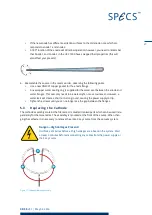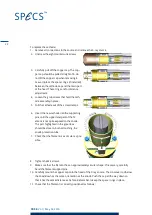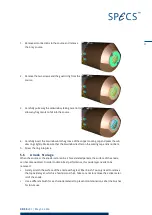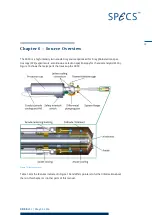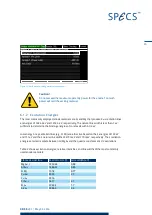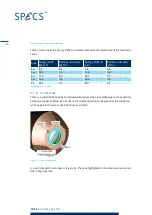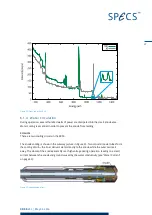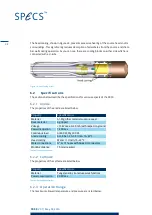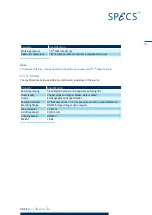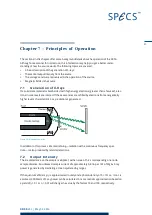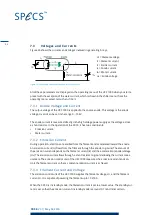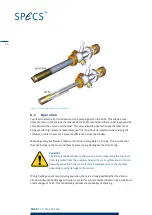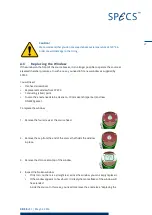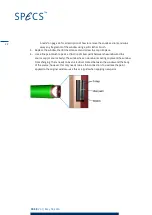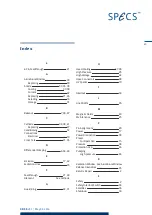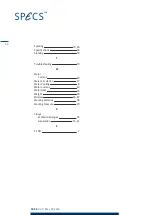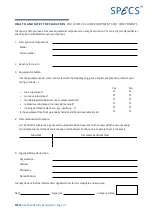
41
XR 50
V3.1 | May 02, 2016
Chapter 7 – Principles of Operation
The sections in this chapter offer some background details about he operation of the XR 50.
Although not essential for normal use, this information may help you get a better under-
standing of how the source works. The following topics are covered:
A basic description of the generation of X-rays.
Theoretical output intensity from the source.
The voltages and currents involved in the operation of the source.
Magnetic fields in the source.
7.1
Generation of X-Rays
If a solid state material is bombarded with high energy electrons (greater than a few keV), elec-
trons in core levels are ionized. If these vacancies are refilled by electrons from energetically
higher levels, characteristic X-ray radiation is generated.
Figure 25: Principle of operation
In addition to this process, Bremsstrahlung—radiation with a continuous frequency spec-
trum—is also produced by retarded electrons.
7.2
Output Intensity
The irradiated area on the sample is elliptical, with an area of 1–2 cm
2
depending on anode-
sample distance. An unbiased sample current of approximately 0.8 nA per 1 W of Mg K
α
X-ray
power is generated by irradiating a clean sputtered Ag target.
If the quantum efficiency η is approximated to unity and a photon density of 5 × 10
12
s
–1
cm
–2
is
assumed, 300 Watts of X-ray power can be calculated. A more realistic approximation based on
a yield of η = 0.1 or η = 0.01 will change the value by the factors 10 and 100, respectively.
Summary of Contents for XR 50
Page 1: ...XR 50 XR 50 NAP X Ray Source User Manual V3 1 May 02 2016...
Page 6: ...XR 50 V3 1 May 02 2016 This page intentionally left vi...
Page 20: ...XR 50 V3 1 May 02 2016 This page intentionally left 14...
Page 30: ...XR 50 V3 1 May 02 2016 This page intentionally left 24...
Page 38: ...XR 50 V3 1 May 02 2016 This page intentionally left 32...
Page 46: ...XR 50 V3 1 May 02 2016 This page intentionally left 40...
Page 58: ......

